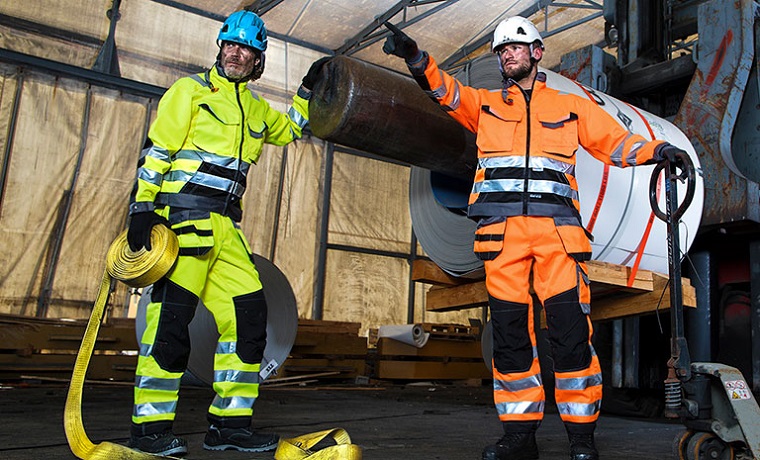
Enhancing Longevity: A Comprehensive Guide to Proper Maintenance and Care of Industrial Coveralls
Industrial coveralls play a crucial role in safeguarding workers from hazardous environments. Whether it’s protecting against chemicals, dust, or other workplace hazards, these coveralls are essential for ensuring the safety and well-being of employees. To maximize the lifespan and effectiveness of industrial coveralls, proper maintenance and care are paramount. In this guide, we’ll explore valuable tips on how to clean, maintain, and store industrial coveralls to ensure their longevity and sustained protective properties.
Selecting the Right Coveralls
Before diving into maintenance tips, it’s crucial to emphasize the importance of selecting the right coveralls for the job. Choose coveralls that are appropriate for the specific hazards present in your workplace. Ensure they meet industry standards and regulations, providing the necessary level of protection.
Regular Inspection
Regular inspections are the cornerstone of proper maintenance. Before each use, carefully inspect the coveralls for any signs of wear and tear. Pay close attention to seams, zippers, and any areas that may be prone to damage. Identifying and addressing issues early can prevent more significant problems down the line.
Pre-treatment for Stains
Industrial environments often expose coveralls to various substances that can result in stubborn stains. To address this, consider pre-treating stained areas before washing. Use a suitable stain remover or a mild detergent to spot-clean stains. Always follow the manufacturer’s recommendations for cleaning agents to avoid damaging the fabric.
Follow Manufacturer’s Instructions
Every set of coveralls comes with specific care instructions from the manufacturer. These guidelines are tailored to the material and construction of the coveralls, ensuring that you maintain their protective properties without compromising durability. Always follow these instructions for washing, drying, and ironing.
Proper Cleaning Techniques
Cleaning industrial coveralls should be a meticulous process. For heavily soiled coveralls, start by shaking off loose dirt and debris. Then, pre-treat stains as mentioned earlier. Use a mild detergent and follow the temperature recommendations on the care label. Avoid using harsh chemicals or bleach, as they can degrade the fabric and compromise the protective features of the coveralls.
Machine Washing Dos and Don’ts
When machine washing coveralls, close all zippers and fasten any closures to prevent snagging. Turn the coveralls inside out to protect the outer surface and enhance cleaning. Use a gentle cycle to minimize wear and tear. If possible, wash coveralls separately from other laundry items to prevent damage.
Drying Guidelines
After washing, air-dry coveralls whenever possible. Excessive heat from tumble dryers can degrade the fabric and reduce the effectiveness of flame-resistant properties. If machine drying is necessary, use a low-heat setting. Remove coveralls promptly to prevent wrinkles and shrinkage.
Storage Best Practices
Proper storage is crucial for preserving the integrity of industrial coveralls. Store them in a cool, dry place away from direct sunlight. Hanging coveralls on sturdy hangers can help maintain their shape and prevent wrinkles. Avoid storing coveralls in areas with excessive moisture, as this can lead to mold growth and fabric degradation.
Repairing Minor Damage
Address minor damages promptly to prevent them from becoming major issues. Sew loose buttons, mend small tears, and reinforce seams as needed. Keeping coveralls in good repair ensures that they continue to provide the necessary protection.
Retirement and Replacement
Even with proper care, industrial coveralls have a limited lifespan. Regularly assess the condition of coveralls, and retire them if they show significant signs of wear or damage. Investing in timely replacements is essential to guarantee the ongoing safety of workers.
Employee Education
Lastly, educate employees on the importance of proper care for their coveralls. Make sure they understand the specific cleaning and maintenance requirements for the coveralls provided. Encourage a culture of responsibility, where workers actively participate in the care and upkeep of their protective gear.
By adhering to these tips for the proper maintenance and care of industrial coveralls, you can significantly extend their lifespan and ensure that they continue to provide optimal protection for workers. From selecting the right coveralls to regular inspections, pre-treatment for stains, and proper cleaning and storage techniques, each step plays a crucial role in preserving the integrity and effectiveness of these essential safety garments. A well-maintained set of coveralls not only contributes to the safety of the workforce but also proves to be a cost-effective investment for businesses in the long run.





